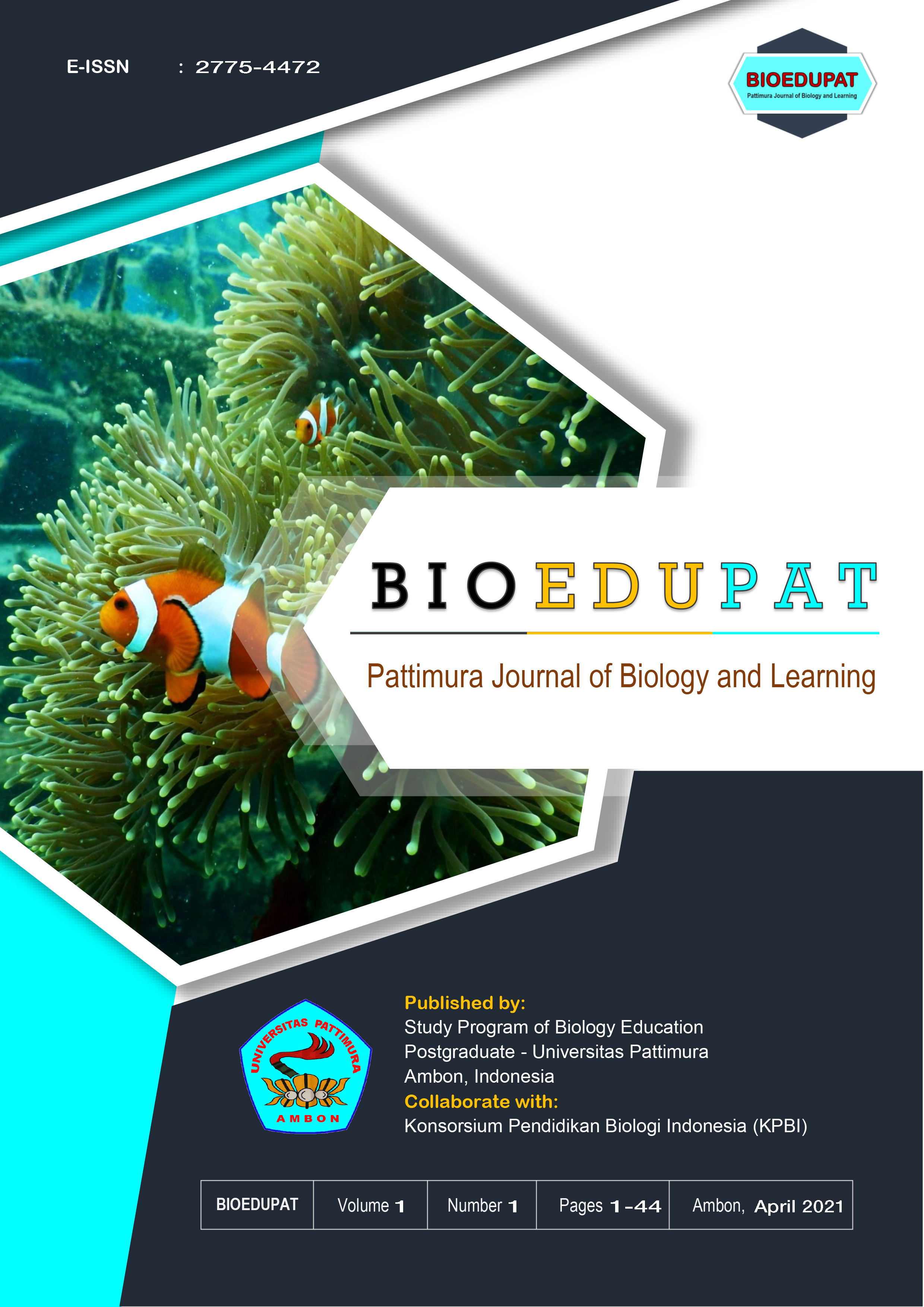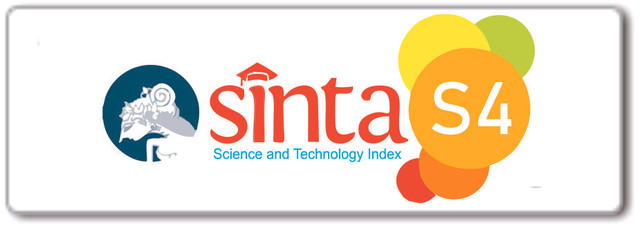PjBL-HOTS learning model: Its application and effect on cognitive learning outcomes, critical thinking, and social attitudes
Abstract
Learning in the digital era 4.0 brings changes for teachers and students. Teachers must prepare innovative digital-based learning to improve students' higher-order thinking skills. This study aims to analyze the effect of the application of the PjBL-HOTS learning model on cognitive learning outcomes, critical thinking, and social attitudes. This type of research is a quasi-experimental research design, which uses a pretest-posttest nonequivalent group design. The study used two classes, namely class X1 as the experimental class while class X2 as the control class. The research instrument is in the form of essay questions to assess students 'cognitive learning outcomes and students critical thinking. Meanwhile, a questionnaire is used to assess students' social attitudes. The data analysis used descriptive and inferential analysis techniques. The inferential analysis used ANCOVA and ANOVA analysis with a significant level of α = 0.05. The results showed that there was an effect of the PjBL-HOTS learning model in improving students' cognitive learning outcomes, critical thinking, and social attitudes. This is because the ability to think critically is always empowered by the teacher at every stage of PjBL
Downloads
References
Anazifa, R., & Hadi, R. (2016). Environmental education through project-based learning (Project-Based Learning) in biology learning. Proceedings of the Symbion of the Biology Education Study Program, FKIP, Ahmad Dahlan University, 453–462.
Astalini, Kurniawan, D., & Putri, A. (2018). Identification of the attitude of the social implications of science, interest in increasing science learning time, and interest in a career in science for junior high school students in Muaro Jambi Regency. Tarbiyah Journal: Scientific Journal of Education, 7(2), 93–108.
Brookhart, SM (2010). How to assess higher-order thinking skills in your classroom. Alexandria, Virginia USA.
Christina L. V ., & Kristin, F. (2017). The effectiveness of the group investigation (G I ) type of learning model and cooperative integrated reading and composition (CIRC) in increasing the creativity of critical thinking and social studies learning outcomes for grade 4 students. Scholaria: Journal of Education and Culture, 6 (3), 217–230.
Çimer, A., Timuçin, M., & Kokoç, M. (2013). Critical thinking level of biology classroom survey: Ctlobics. The Online Journal of New Horizons in Education, 3(1), 15–24.
Dinni, H. N. (2018). HOTS (High Order Thinking Skills) and its relation to mathematical literacy skills. Prism 1: Proceedings of the National Mathematics Seminar, 170–176.
Fitriani, A., Indrowati, M., & Karyanto, P. (2015). Students' critical thinking skills in biology learning through the application of accelerated learning for class X SMA Negeri Karangpan and Karanganyar. Journal of Biological Education, 7(2), 56–67.
Gusviani, E. (2016). Analysis of the emergence of spiritual attitudes and social attitudes in science learning activities for grade IV SD using KTSP and the 2013 curriculum. Eduhumaniora, 7(2), 1–10.
Heong, Y. M, Othman, W., Yunos, J. B. M., Kiong, T., Hassan, R., & Mohamad, MM (2011). The level of Marzano higher-order thinking skills among technical education students. International Journal of Social Science and Humanity, 1(2), 121–125.
Huda, M., & Rahman, L. (2020). The relationship between critical thinking skills and learning outcomes of elementary school students. Journal of Character Education: Journal of Child and Character Education, 2(2), 42–47.
Husnah, M. (2017). The relationship between the level of critical thinking on student physics learning outcomes by applying the problem-based learning model. Journal of Physics and Science Learning, 1(2), 1–12.
Insyasiska, D., Zubaidah, S., & Susilo, H. (2015). The effect of project-based learning on learning motivation, creativity, critical thinking skills, and cognitive abilities of students in biology learning. Journal of Biological Education, 7(1), 9–21.
Istiyono, E., Mardapi, D., & Suparno, S. (2014). Development of high-level physics thinking skills test (PysTHOTS) of high school students. Journal of Educational Research and Evaluation, 18(1), 2–5.
Klein, J., Taveras, S., King, SH, Commitante, A., Bey, LC., & Stripling, B. (2009). A Guide To project-based learning in middle schools: Inspiring students to engage in deep and active learning. NYC Department of Education.
Kusuma, M., Rosidin, U., Abdurrahman., & Suyatna, A. (2017). The Development of higher-order thinking skill (HOTS) assessment instrument in physics study. Journal of Research & Method in Education, 7(1), 26–32.
Leiwakabessy, F., Hetharia, M., & Manuputty, R. (2018). Development of biological teacher capabilities in the development of test instruments based on high order thinking skills (HOTS) In high school in Ambon city that have applied 2013 Curriculum. Proceeding Book of The 3rd International Seminar on Education November 07th, 2, 76–86.
Listiani, S., & Purwanto, A. (2018). The application of a project-based learning model using used goods to improve students' scientific attitudes. Proceedings of the Seminar and National Discussion on Basic Education, 24–29.
Lukitasari, M., Handhika, J., & Murtafiah, W. (2018). Higher-order thinking skills: Using e-portfolio in project-based learning. In Journal of Physics: Conference, 983(12047), 1–7.
Narahaubun, S. S, Rehena, J. F., & Rumahlatu, D. (2020). Empowering students' critical thinking skills, information literacy, and cognitive learning outcomes through the RBL-TPS model. Indonesian Journal of Biological Education, 6 (2), 243–256. https://doi.org/10.22219/jpbi.v6i2.11456
Primandari, P., Sulasmono, B. S., & Setyaningtyas, E. (2019). The difference in the effect of the cooperative model type TGT and STAD with cheerful interactive multimedia on social attitudes and cognitive learning outcomes in thematic learning in grade 5 SD. Basicedu's Journal, 3(3), 83–91.
Putri, R. L, Dwiastuti, S., & Karyanto, P. (2018). The effect of higher-order thinking skills questions in problem-based learning model toward student's critical thinking. Proceeding Biology Education Conference, 15(1), 324–328.
Rumahlatu, D., & Sangur, K. (2019). The influence of project-based learning strategies on the metacognitive skills, concept understanding, and retention of senior high school students. Journal of Education and Learning, 13(1), 104–110.
Rumahlatu, D., Sangur, K., & Liline, S. (2020). The effect of complex instruction team product (CITP) learning model on increase student's skills. International Journal of Instruction, 13(1), 587–606. doi: https://doi.org/10.29333/iji.2020.13138a
Said, H., Kasuba, F., & Sirajudin, N. (2016). Application of learning model student teams education division (STAD) to improve learning outcomes and activities of class VII students on the ecosystem concept at SMP Negeri 6 Bibinoi. Journal of Bioeducation, 4(2), 551–561.
Sambite, F. C, Mujasam, M., Widyaningsih, S., & Yusuf, I. (2019). Application of project-based learning based on simple teaching aids to increase the HOTS of students. Periodic Scientific Physical Education, 7(2), 141–147.
Samosir, A., Hasruddin., & Dongoran, H. (2019). Analysis of the quantity and quality of biology teacher and student questions on the excretion system material. Pelita Pendidikan Journal, 7(1), 9–15.
Sanjiwana, P. P. C. M., Pudjawan, K., & Margunayasa, IG (2015). Analysis of the Social Attitudes of Class V Students on Learning with the 2013 Curriculum. PGSD Journal, Ganesha Education University, PGSD Department, 3(1), 11–18.
Setiawati, H., & Corebima, A. (2017). Empowering critical thinking skills of the students having different academic abilities in biology learning of Senior High School through PQ4R - TPS Strategy: The International Journal of Social Sciences and Humanities Invention, 4(5), 3521–3526.
Stephani, M. R (2016). The Role of Teachers in Efforts to Increase Higher Order Thinking Through Guided-Discovery Teaching Styles in Physical Education Learning. Journal of Physical Education d 's Sport, 1(2), 34-42.
Sukerta, K., Lasmawan, I. W, & Natajaya, I. N. (2014). The influence of the cooperative learning model of the stad type on social studies learning achievement with the covariable social attitudes of fifth-grade elementary school students of Cluster III South Kuta District, Badung Regency, Bali. PENDASI: Indonesian Journal of Basic Education, 4(1), 1–11.
Susilowati, I., Iswari, R., & Sukaesih, S. (2013). The effect of project-based learning on student learning outcomes regarding the human digestive system. Journal of Biology Education, 2(1), 82–90.
Tajudin, Nor'ain, M., & Chinnappan, M. (2016). The link between higher-order thinking skills, representation, and concepts in enhancing TIMSS tasks. International Journal of Instruction, 9(2), 1–9.
Wahid, A. H., & Karimah, R. A. (2018). Integration of higher-order thinking skills (HOTS) with creative problem-solving models. Modeling: Journal of the PGMI Study Program, 5(1), 82–98.
Walfajri, R., & Harjono, N. (2014). Improved critical thinking skills and thematic learning outcomes of science content through problem-based learning models for grade 5 SD. Basicedu's Journal, 3(1), 16–20.
Widodo, T., & Kadarwati, S. (2013). Higher-order thinking based on problem-solving to improve learning outcomes-oriented to character building students. Education Horizons, 2013(1), 161–171.
Copyright (c) 2021 Aminah Launuru, Dominggus Rumahlatu, Muhammad Nur Matdoan

This work is licensed under a Creative Commons Attribution-NonCommercial-ShareAlike 4.0 International License.
Authors who publish with BIOEDUPAT: Pattimura Journal of Biology and Learning agree to the following terms:
- Authors retain copyright and grant the journal right of first publication with the work simultaneously licensed under a Creative Commons Attribution License (CC BY-NC-SA 4.0) that allows others to share the work with an acknowledgment of the work's authorship and initial publication in this journal.
- Authors are able to enter into separate, additional contractual arrangements for the non-exclusive distribution of the journal's published version of the work (e.g., post it to an institutional repository or publish it in a book), with an acknowledgment of its initial publication in this journal.
- Authors are permitted and encouraged to post their work online (e.g., in institutional repositories or on their website) prior to and during the submission process, as it can lead to productive exchanges, as well as earlier and greater citation of published work.









 This work is licensed under a
This work is licensed under a 